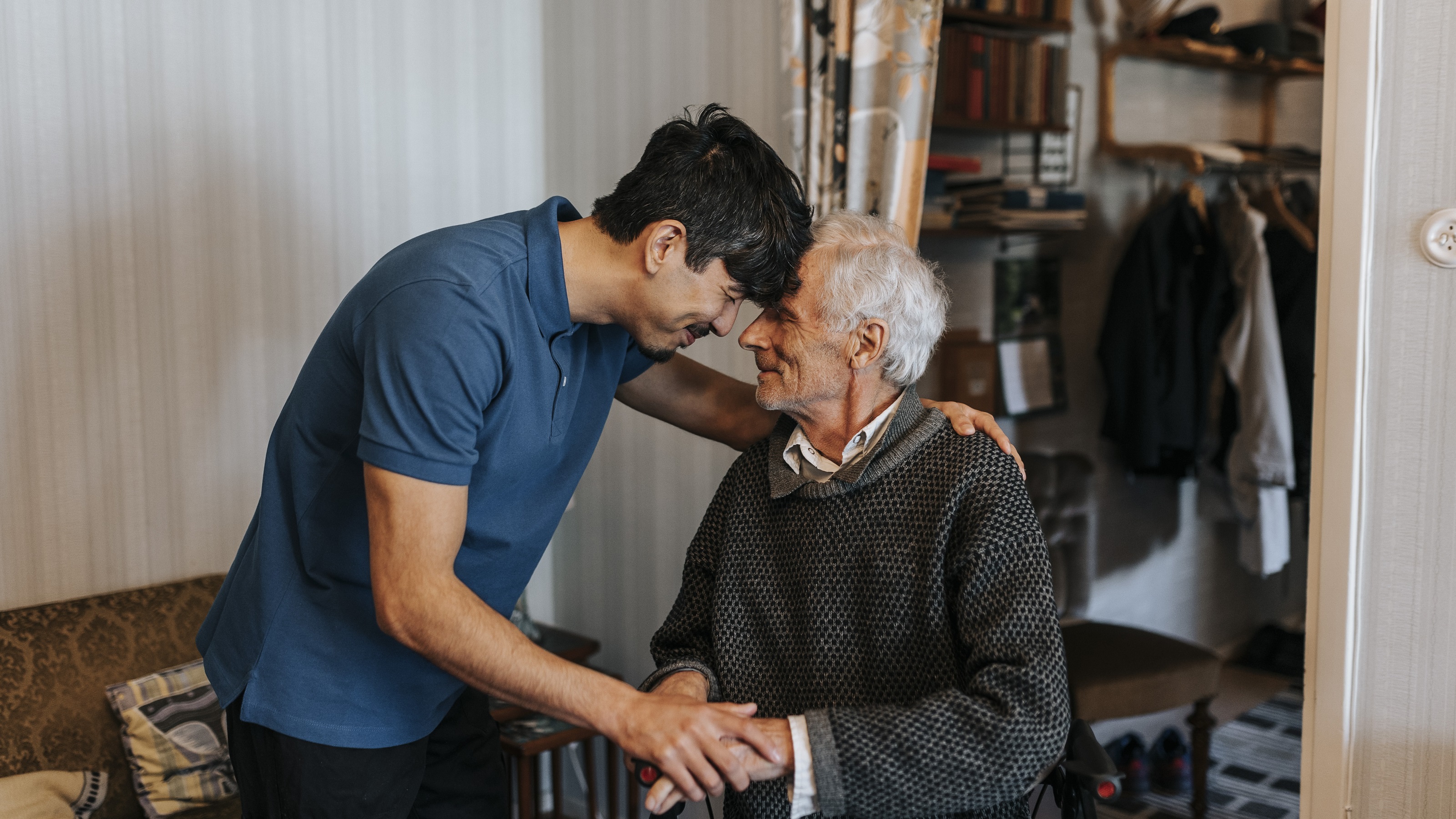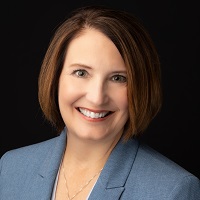How to Approach the Caregiving Transition When It’s Time
For National Caregivers Month, this financial adviser shares her story to help others heading into the emotional challenge of providing caregiving for an aging loved one.


I never expected to take care of my mother; after all, she had always cared for me. The thought of her giving up her independence — and, to some degree, her spirit — was unthinkable to both of us. Yet, in 2017, at the age of 90, she moved into my home. I had become one of the about 40 million Americans who provide unpaid care to older adults and adults with disabilities. Almost as stressful was the process leading up to this decision. As November is National Caregivers Month, I hope my story can help others who are facing this transition.
Approach it holistically
As you are identifying the best course of action for your loved one and their personal situation, there are certain things to keep in mind. While there are certainly practical things that must be done, focusing only on this part may hinder everyone.
- First, consider the people involved in the transition. What are everyone’s concerns, and what is their unique perspective?
- What is the purpose, the desired result? Is everyone in alignment?
Sometimes, articulating your purpose can be difficult. However, it is invaluable. For those with complex family dynamics, a mediator may be helpful. If you or your parents have a trusted adviser (financial planner, attorney or doctor), they can be a good choice. When beginning a discussion, remember:

Sign up for Kiplinger’s Free E-Newsletters
Profit and prosper with the best of expert advice on investing, taxes, retirement, personal finance and more - straight to your e-mail.
Profit and prosper with the best of expert advice - straight to your e-mail.
- Be patient
- Every attempt at conversation has value
- You do not have to cover everything at once
For additional guidance on having tough conversations with aging loved ones, this article from AmeriCare is an excellent resource.
Next, evaluate the parts. What responsibilities should be transitioned and to whom? Can responsibilities be shared? In my case, my family and I agreed that I would be responsible for my mother’s medical and financial care. However, other family members were often available to help with her daily needs and give me an occasional break, and my sisters contributed financially.
Finally, move forward with the practical steps, which are unique to every situation. If a move is involved, this will mean choosing the best place, whether with family or in a care facility. If with family, modifications to the home may be necessary; and, if a facility, it will take time to choose the best one. A Place for Mom is a free service for families who need help in finding the best fit. Whatever the decision, it will determine the next steps.
Another practical item is estate planning. It is imperative that your loved one’s will, advanced healthcare directive, HIPAA authorization and financial power of attorney are in good order. The primary caregiver may or may not be executor of the will but should be appointed in each of the other documents.
Moving forward
Once a decision is made and the transition has begun, it doesn’t mean your work is done. In fact, the situation will continue to evolve. I was fortunate that my mother’s move went smoothly, and once she agreed to give up her home, she was content.
However, three things continued to present challenges: her declining health, my well-being and financial obligations. Although we went into it believing we had imagined every eventuality, it is impossible to do so. The key is to recognize when things are changing and seek help. Oftentimes, all three challenges can be abated simultaneously — in our case, through hospice care.
Hospice care is often available even when death is not imminent, and my mother qualified. Since I continued to work full time, it was helpful to have a volunteer visit on the days I was out. Whether you find yourself at the beginning of your caregiver’s journey, or further along the path, try not to project too far into the future, which will invariably increase your anxiety in the present. Most important, remember that it is OK, even necessary, to ask for help.
The hospice program also supplied a social worker, who was there as much for me as for my mother. He offered an ear when I needed to talk — or vent — and he understood what I was experiencing. Even in the best of circumstances, there will be difficult days, so remember to nurture your own support system and practice self-care.
Self-care means different things to different people, but some components are universal. I was surprised at how often I forgot to eat or found myself actually holding my breath. Our social worker was careful to remind me to continue to engage in the things that brought me fulfillment, however small.
Lastly, give yourself permission to take a few days off. Hospice offered short-term residential care, but a family member might also take over, or you might consider hiring a private nurse or companion.
Although Medicare covered most of the costs, there were times when private certified nursing assistants (CNAs) were needed. Some ways to avoid depleting your own financial assets are to evaluate what assets your loved one has, as well as research any additional aid they may qualify for. If you can contribute financially, consider how your siblings may be able to share in the cost or assist in other ways. It is important to remember that there are organizations such as Administration for Community Living that can help, whatever challenges your situation may present.
Caring for my mother during the 14 months she lived with me was one of the most difficult things I have ever done, but also one of the most rewarding. As we celebrate National Caregivers Month, I hope that everyone navigating this journey remembers to give themselves some grace during this challenging time.
Securities offered through LPL Financial, member FINRA/SIPC. Investment advice offered through Merit Financial Group, LLC, an SEC registered investment adviser. Merit Financial Group, LLC and Merit Financial Advisors, are separate entities from LPL Financial. The opinions voiced in this material are for general information only and are not intended to provide specific advice or recommendations for any individual.
Kelly Gallimore is solely an investment advisor representative of Merit Financial Advisors and not affiliated with LPL Financial. Any opinions or views expressed by Kelly Gallimore are his/her own and are not those of LPL Financial.
Related Content
Get Kiplinger Today newsletter — free
Profit and prosper with the best of Kiplinger's advice on investing, taxes, retirement, personal finance and much more. Delivered daily. Enter your email in the box and click Sign Me Up.

In July 2021, Kelly joined Merit Financial Advisors, bringing 19 years of experience in the financial services industry, as well as human resources and team development. A student of Behavioral Finance, she incorporates various tools to provide insight into clients’ own financial views and how their innate strengths and struggles can influence decision-making and ultimate success in reaching goals. In addition to traditional tenants of wealth management, Kelly specializes in estate planning and administration, guiding families as they consider personal and financial legacies.
-
 Six Reasons to Disinherit Someone and How to Do It
Six Reasons to Disinherit Someone and How to Do ItWhether you're navigating a second marriage, dealing with an estranged relative or leaving your assets to charity, there are reasons to disinherit someone. Here's how.
By Donna LeValley Published
-
 Should You Still Wait Until 70 to Claim Social Security?
Should You Still Wait Until 70 to Claim Social Security?Delaying Social Security until age 70 will increase your benefits. But with shortages ahead, and talk of cuts, is there a case for claiming sooner?
By Evan T. Beach, CFP®, AWMA® Published
-
 Should You Still Wait Until 70 to Claim Social Security?
Should You Still Wait Until 70 to Claim Social Security?Delaying Social Security until age 70 will increase your benefits. But with shortages ahead, and talk of cuts, is there a case for claiming sooner?
By Evan T. Beach, CFP®, AWMA® Published
-
 Retirement Planning for Couples: How to Plan to Be So Happy Together
Retirement Planning for Couples: How to Plan to Be So Happy TogetherPlanning for retirement as a couple is a team sport that takes open communication, thoughtful planning and a solid financial strategy.
By Andrew Rosen, CFP®, CEP Published
-
 Market Turmoil: What History Tells Us About Current Volatility
Market Turmoil: What History Tells Us About Current VolatilityThis up-and-down uncertainty is nerve-racking, but a look back at previous downturns shows that the markets are resilient. Here's how to ride out the turmoil.
By Michael Aloi, CFP® Published
-
 Could You Retire at 59½? Five Considerations
Could You Retire at 59½? Five ConsiderationsWhile some people think they should wait until they're 65 or older to retire, retiring at 59½ could be one of the best decisions for your quality of life.
By Joe F. Schmitz Jr., CFP®, ChFC® Published
-
 Home Insurance: How to Cut Costs Without Losing Coverage
Home Insurance: How to Cut Costs Without Losing CoverageNatural disasters are causing home insurance premiums to soar, but don't risk dropping your coverage completely when there are ways to keep costs down.
By Jared Elson, Investment Adviser Published
-
 Markets Roller Coaster: Resist the Urge to Make Big Changes
Markets Roller Coaster: Resist the Urge to Make Big ChangesYou could do more harm than good if you react emotionally to volatility. Instead, consider tax-loss harvesting, Roth conversions and how to plan for next time.
By Frank J. Legan Published
-
 Why Homeowners Insurance Has Gotten So Very Expensive
Why Homeowners Insurance Has Gotten So Very ExpensiveThe home insurance industry is seeing more frequent and bigger claims because of weather, wildfires and other natural disasters.
By Karl Susman, CPCU, LUTCF, CIC, CSFP, CFS, CPIA, AAI-M, PLCS Published
-
 Going Through Probate? How to Find the Right Attorney
Going Through Probate? How to Find the Right AttorneyJust having the skills and experience to do the job isn't enough. The probate attorney you hire needs to have the right temperament for your particular case.
By John R. Silva, Esq. Published